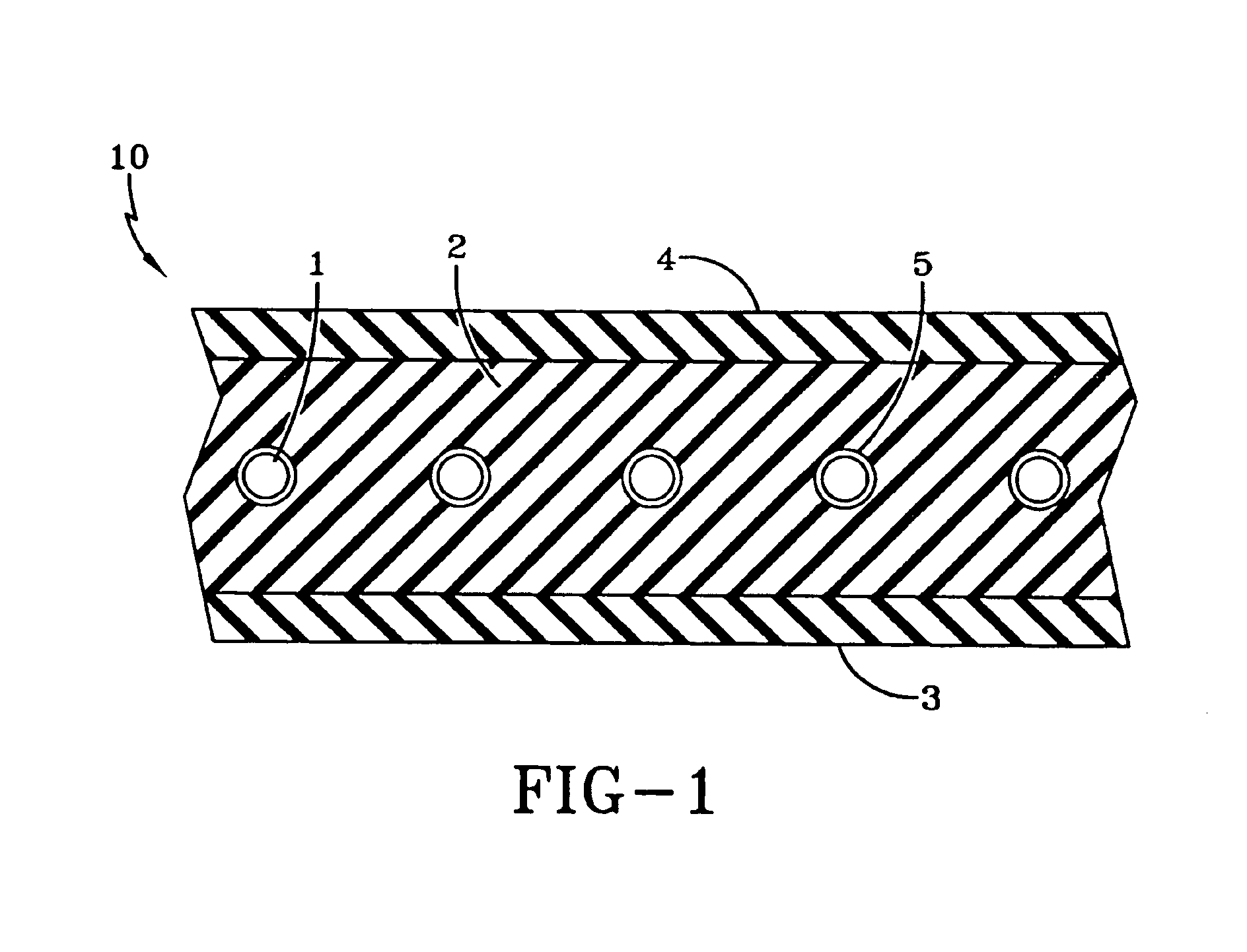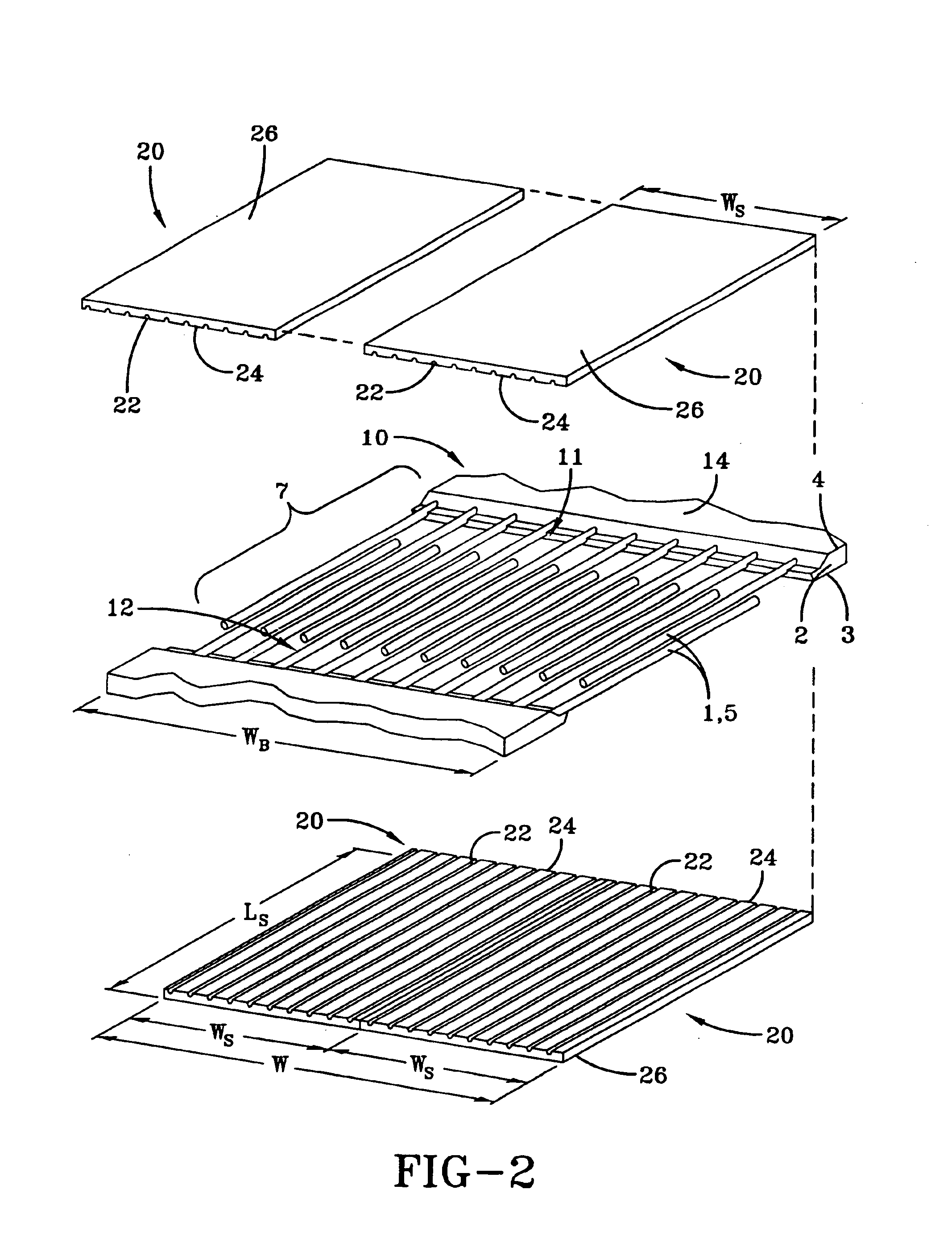Method for splicing a conveyor belt
a conveyor belt and splicing technology, applied in the field of splicing conveyor belts, can solve the problems of stranded belts that may extend several miles, cost millions of dollars to install and fabricate, and the removal of rubber can be a time-consuming and tedious task
- Summary
- Abstract
- Description
- Claims
- Application Information
AI Technical Summary
Problems solved by technology
Method used
Image
Examples
example i
This example illustrates the effect of adding polyoctenamer to a vulcanizable rubber composition on the physical properties of the compound, and on the adhesion of the composition to steel cord.
Four compound samples were prepared as indicated in Table 1. The samples were compounded with identical and standard amounts of fillers, sulfur, accelerators, antioxidants, and process aids.
TABLE 1Sample123SBR807060Natural Rubber202020Polyoctenamer010201Vestenamer 8012, from Degussa AG High Performance Polymers
The samples of Table 1 were cured for 35 minutes at 305° F. and tested for physical properties as indicated in Table 2.
TABLE 2SampleControl123Hardness778084Tensile strength (psi)294227302637Elongation (%)444402368Modulus 100% (psi)507648723Modulus 300% (psi)184820212099Tear die C (lbs. / in.)253250256
Adhesion test blocks were prepared from Samples 1 through 3 using 8 mm galvanized steel cord. The test blocks were prepared and tested for dynamic adhesion following the procedures of Austra...
PUM
| Property | Measurement | Unit |
|---|---|---|
| glass transition temperature | aaaaa | aaaaa |
| melting point | aaaaa | aaaaa |
| decomposition temperature | aaaaa | aaaaa |
Abstract
Description
Claims
Application Information
 Login to View More
Login to View More - R&D
- Intellectual Property
- Life Sciences
- Materials
- Tech Scout
- Unparalleled Data Quality
- Higher Quality Content
- 60% Fewer Hallucinations
Browse by: Latest US Patents, China's latest patents, Technical Efficacy Thesaurus, Application Domain, Technology Topic, Popular Technical Reports.
© 2025 PatSnap. All rights reserved.Legal|Privacy policy|Modern Slavery Act Transparency Statement|Sitemap|About US| Contact US: help@patsnap.com



